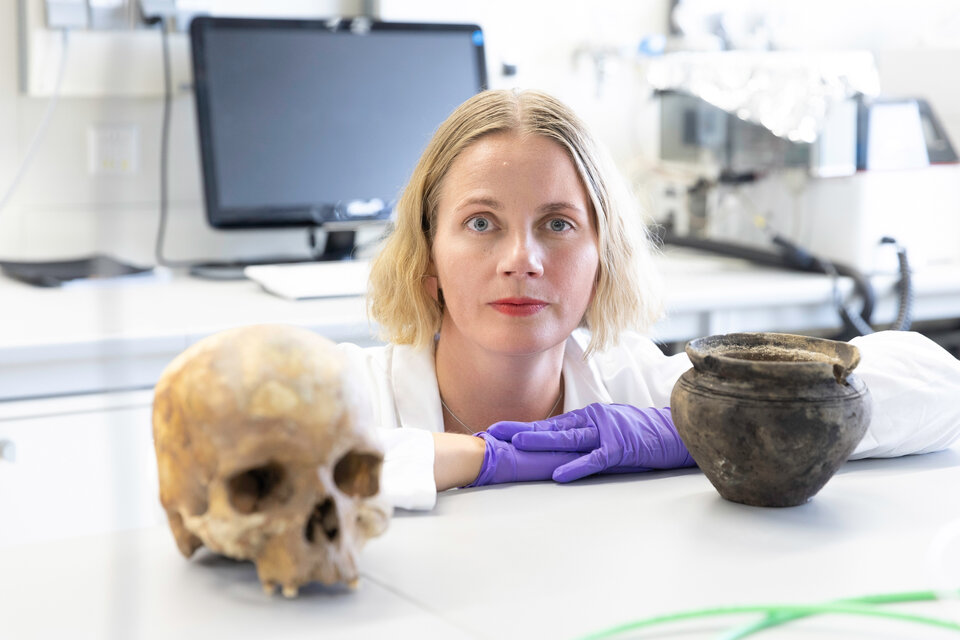You are what you eat – ERC grant supports research into past people’s identities based on their dietary practices

Ester Oras, Associate Professor in Analytical Chemistry and Archaeology at the University of Tartu, has received a Starting Grant from the European Research Council (ERC) to study the identities of our distant ancestors based on their diet. Over the next five years, Oras and her team plan to conduct an in-depth biomolecular analysis of at least 150 ancient burials to uncover new layers in the lives of people from a thousand years ago and broaden the range of research methods available to archaeologists.
Messages from the distant past are carried to the present day by different archaeological finds and ancient burial sites, whilst the latter reveal the moment in history when a community buried a member according to how they saw the deceased in society at the time. Often, however, the life of the deceased, the aspects of their group identity and how it changed over their lifetime remain hidden. However, detailed biomolecular analysis of ancient skeletal remains and pottery food residues can shed light on these multiple and dynamic identity categories.
“The study of what people ate is crucial in archaeology because it allows, thanks to modern high-resolution analysis, to reconstruct the intricate details of the human diet from infancy to death at the biomolecular level. The human skeleton and bone tissues develop throughout the lifespan. Thus, an analysis of samples from different bone elements can show us how the person spent their childhood, whether they grew up where they were buried, whether they consumed, for example, typical women’s food or the food of a wealthy family, and how their identity evolved over their lifetime,” Oras explained.

Until now, identity categories have mostly been studied in isolation – comparing and opposing e.g. men or women, peasants or noblemen. Food, however, can be a common denominator for all these social groups and the molecular information stored in the skeletal remains makes it possible to analyse several social categories at the same time. For the analysis, the researchers use cemetery materials dating from 1000–1400: skeletons, teeth, dental plaque, but also pottery buried as grave goods. Altogether, they plan to analyse at least 150 finds, mainly from burial sites in different parts of Estonia.
The project will have a significant impact on archaeological research. Differently from earlier research that has focused primarily on single molecules, such as lipids or proteins, this project will for the first time combine all known methods, including the analysis of different biomolecules and high-resolution methods. These make it possible to obtain more nuanced dietary data, e.g. not only to determine whether a person ever ate fish but also whether the fish was cod or herring. The skeletons will be also examined for DNA to identify possible family links. Machine learning will be used to combine analytical methods and identify relations. According to Oras, such combining of methods is entirely new and allows a qualitative leap forward for archaeological research, both in terms of the methods developed and the novel concepts of social archaeology and identity studies.
The grants from the European Research Council support innovative frontier research in various disciplines. The Starting Grant is awarded to early-stage researchers with outstanding ideas. Ester Oras, the founder and leader of the interdisciplinary research group Archemy at the University of Tartu, combines archaeology with cutting edge analytical methods to study ancient and medieval nutrition and health issues. The Archemy team will also implement the upcoming five-year ERC project “Food identities: biomolecular archaeology reveals multiple and dynamic social identities”. The project budget will be 2.4 million euros.






